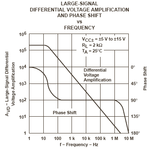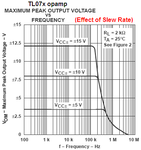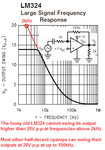David_
Advanced Member level 2
Hello.
While reading comments about a circuit on a site a short talk about the usable frequency range of the meter circuit, and someone said that TL074 should work to about 2MHz(slew rate = 13/µS)
and that using AD843 which has a slew rate = 250V/µS would increase the bandwidth to 20MHz.
I don't understand the relationship or how to do the numbers to figure that out, I don't "need" to know but I sure would like to know if someone could explain.
I know that slew rate is the rate of change the output can manage but how does that determine the frequency capabilities, I do see kind of how it works as higher frequency will need the voltage to change faster but how do I know that 13V/uS = 2MHz & 250V/uS = 20MHz?
Regards
While reading comments about a circuit on a site a short talk about the usable frequency range of the meter circuit, and someone said that TL074 should work to about 2MHz(slew rate = 13/µS)
and that using AD843 which has a slew rate = 250V/µS would increase the bandwidth to 20MHz.
I don't understand the relationship or how to do the numbers to figure that out, I don't "need" to know but I sure would like to know if someone could explain.
I know that slew rate is the rate of change the output can manage but how does that determine the frequency capabilities, I do see kind of how it works as higher frequency will need the voltage to change faster but how do I know that 13V/uS = 2MHz & 250V/uS = 20MHz?
Regards


